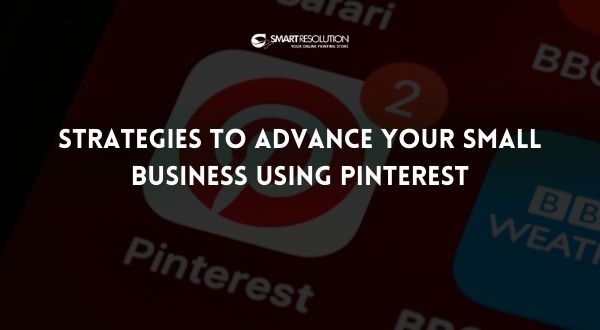Are you among those who use Pinterest simply to look at luscious pictures of food and travel destinations? Then you’re missing out on an excellent marketing platform for your business.
Pinterest is more than just a social media where people post pictures – it has been a source of inspiration and ideas for many businesses and everyday things.
Most businesses think of Instagram and Facebook to channel their marketing efforts, but Pinterest has become a strong platform that you can take advantage of to have the edge among your competitors.
Let’s see how to gain inspiration and tips to run a successful small business using Pinterest.

1. Learn the basics of Pinterest
Every social media platform serves a different purpose. Facebook is about making connections and communicating with people, while Instagram is a visual centric platform where brands use engaging visual content to attract people. Twitter is where people share their voice or opinion on topics ranging from politics, science, sports, etc.
Pinterest is a unique social platform where people come to look for inspiration and new ideas, whether it’s about buying a new suit or re-decorating their home. Pinterest users aren’t put off when pins from businesses appear in their feeds.
Besides, Pinterest users are more likely to make purchases of products promoted on their feed. They are even known to cross-reference their saved pins when shopping at brick-and-mortar stores. All these intend that Pinterest is full of potential leads who are looking for products and services to buy.
2. Create and account and assess the situation
Before starting to implement your marketing efforts on Pinterest, you should create an account and assess the situation. To launch your first marketing campaign without prior experience and see it fail is the last thing you want. When setting up your Pinterest account, make sure to choose a category that best fits your business. Don’t be shy to take a ponder at what your competitors are doing to learn a thing or two about what to do and what not to do.
After setting up your account, the next crucial step is creating your profile. Your profile can highly influence your brand’s success or failure on the platform. Carefully choose a profile picture that reflects your brand’s identity and personality. Also, include your website’s URL and your address if you run a brick-and-mortar business.
Enable your website to track what users are pinning by verifying your website. This data can help you come up with a better marketing strategy or modify existing ones to boost your sales.
The appeal of Pinterest is to get users to follow your brand and share its products and services. You need to create category-specific boards for people to start pinning. Any content that you share from your business account should be engaging and interesting to make people return.
ALSO READ: QR Code 101 – How To Use QR Codes For Your Business?
3. Boast your expertise through Blog Posts
Businesses are starting to pin blog articles, coming up with interesting visual forms of images, gif, and infographics. When clicked, users will be directed to your website to read more of the blog post, improving brand recognition alongside. Pinterest requires you to include an image or visual imagery of some sort when sharing a blog so it’s more appealing to the users.
Pinterest is also a great platform where you can highlight clients and exciting content from other brands similar to yours. Share images and high-quality graphic content that catches the eye of the user to click on your posts. The more they stay on your boards or website, the better it is for your sales.
4. Make your boards SEO friendly
You could have created the best board in all of Pinterest but it’d be of no use if no one knows about it. You should make your boards search engine friendly to get the most out of your marketing efforts. You want your boards to show up in the search results when people search for keywords related to your brand.
When you’re done coming up with a list of topics your boards should exhibit, find the keywords that are often used to search those topics, products or services. Insert those keywords into your profile, boards, image alt-text and anywhere else possible on Pinterest. This will improve the visibility of your boards and profile within Pinterest and in Google search results as well.
5. Evaluate your campaigns
Wasting time and resources on Pinterest is the last thing you need, thus it’s essential to evaluate the performance of your campaigns. You should be aware of whether or not your pins are relatable and if users are engaging with and re-pinning them. You should also find out if it’s bringing in more followers, which would be highly beneficial for any small business.
You’ll be able to identify what types of content engages users and what they’re expecting through data obtained from such evaluations. All these data can be put together to develop better marketing strategies for future campaigns.
Conclusion
Social media can be overwhelming with plenty of choices to pick from, but Pinterest has it all to help your small business advance. Pinterest users are looking for suggestions and inspirations from brands and other users alike. In order to tap into the fullest potential on this platform, you have to come up with informative and interesting pins that attract and retain prospects. If you’re able to do that and keep evaluating your marketing efforts, you’re sure to achieve great results.



